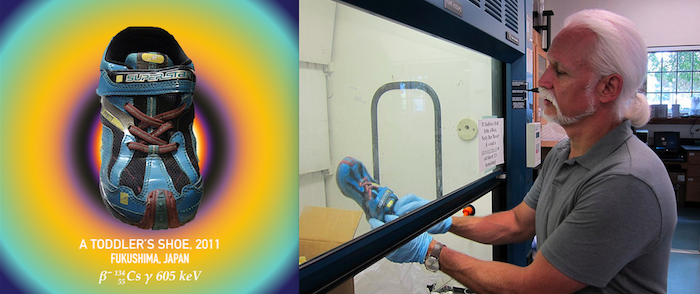|
|
What is the Zoo?
| |
Radioactive samples as creatures, animals in a zoo, of which there are currently 1,500 samples gathered from across the globe. A pair of zookeepers populates and connects these animal exhibits, and displays these in a nuclear-themed zoo. The zoo includes an actual aquarium, which allows the exhibits to be experienced safely. The aquaria waters protect the viewers from radiation, just as we protect atomic workers from spent nuclear fuel using a fuel pool. The zoo collection allows indigenous observers and citizen-scientists to get scientific data on their locally-collected artifacts, and to connect with other localities where similar artifacts have already been collected. The animals themselves are analyzed and have overlapping tags that connect them in a fashion that mirrors the connections of the global nuclear fuel cycle. These objects are souvenirs from the global once-through game of Extraction, Exploitation, followed by Disposal. If you've ever played Magic-The-Gathering®, then you already know how this works. The end product of the zoo is not the zoo-animals, it's the global network of indigenous Zoo Keepers.

|
|
Got it. So why a zoo?
|
|
The Zoo is the public face of the Unfriending the Atom project. We are a network of citizen-scientists joining public artists in making visible the hidden presence of nuclear radiation.
Citizen science and public art can neutralize secrecy and information hoarding that has allowed nuclear weapons and radioactive contamination to proliferate. Secrecy and inertia impede the ability of global society to examine and respond to the risks of nuclear technology, promote environmental justice, protect indigenous communities from resource exploitation, and mitigate global conflicts. We propose to create a model for training and equipping a local, scalable network of citizen scientists to better protect their communities from nuclear radiation and to increase the difficulty of advancing nuclear weapons programs. Our goal is to reduce nuclear contamination and proliferation by enabling locally-based citizen-scientists, organizers and artists to participate in an open, shared radiological monitoring and teaching program.
|
|
| |
As radiation exists beyond our perception and nuclear wastes persist far beyond our lifetimes, how do we both detect and effectively communicate its presence? This question uniquely intersects the fields of science and art - and in the age of misinformation it is imperative to not only sense and perceive hidden threats, but to make people both feel and believe in the veracity of the data. The mission of this project will be to create publicly accessed experiences, artifacts, and datasets through sharing art, research-methods and sensor equipment with citizens to reestablish a baseline of truth surrounding the invisible threat of nuclear radiation across humans, animals, plants and minerals.
|
|

Harvard University Artist Dan Borelli @danborelli and Dr. Marco Kaltofen, @MKaltofen, a Registered Professional Engineer, are the keepers of a global radioactive zoo; collecting samples, objects, and stories from locally-based citizen-scientists.
|
|

This work is licensed under a Creative Commons Attribution-NonCommercial 4.0 International License.
|
|